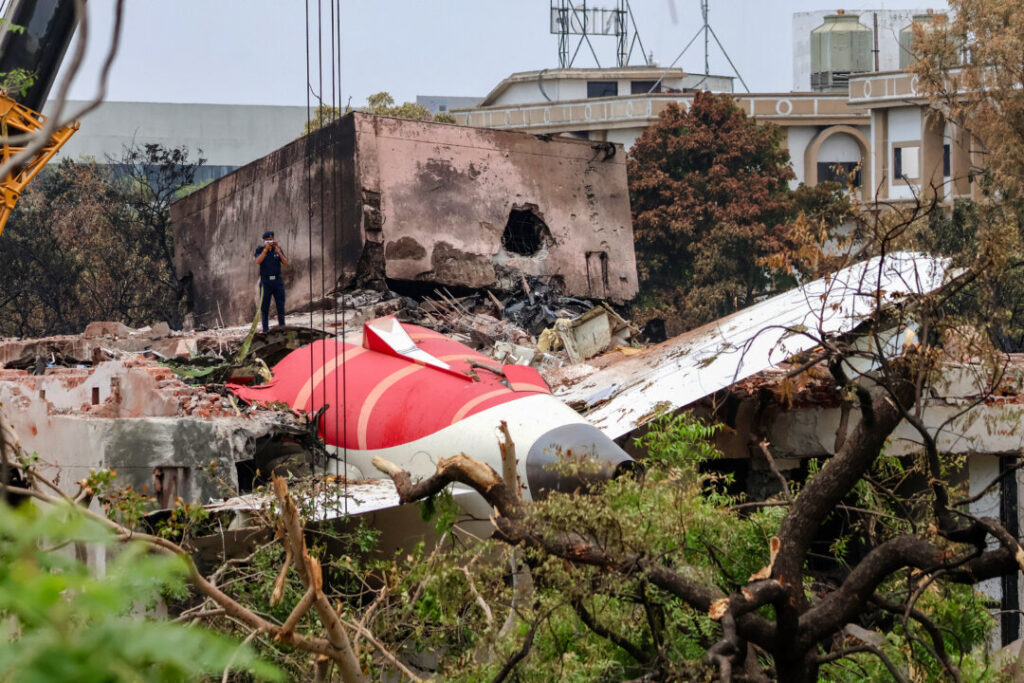
A crane removes the wreckage of the Air India Boeing 787-8 Dreamliner aircraft, which crashed during take-off from an airport, in Ahmedabad, India, on June 14, 2025. (Basit Zargar/Middle east images/AFP via Getty Images)
A preliminary investigation into the tragic crash of an Air India plane on June 12, 2023, has revealed that the aircraft’s fuel control switches were turned off just seconds after takeoff, resulting in the deaths of all 260 passengers and crew members onboard. The findings, published by India’s Aircraft Accident Investigation Bureau (AAIB) on July 11, indicate that both engines’ fuel control switches were deactivated with a time gap of only one second.
The report detailed that the cockpit voice recording captured a conversation between the pilot and co-pilot during the critical moments following takeoff. One pilot questioned the other about the fuel switches being turned off, to which the co-pilot insisted that he had not initiated the action. This exchange raises significant concerns about the events leading up to the crash, though the AAIB has not definitively attributed the fuel switch shutdown as the sole cause of the incident.
Investigation Timeline and Context
The crash occurred shortly after the aircraft took off from Mumbai, one of India’s busiest airports, bound for an international destination. The AAIB has begun a comprehensive investigation, which includes examining the pilots’ training, aircraft maintenance records, and any potential mechanical failures. While the preliminary report sheds light on the fuel switch issue, investigators are still analyzing other factors that may have contributed to the accident.
The AAIB is expected to release more detailed findings as the investigation progresses. This incident marks one of the most devastating aviation disasters in recent memory for India, prompting renewed discussions about safety protocols and regulatory oversight within the country’s aviation sector.
Impact on Aviation Safety Regulations
The Air India crash has raised alarms about the safety standards in aviation, especially regarding pilot training and aircraft maintenance. Following the incident, aviation authorities may consider revising regulations to enhance safety measures. Key stakeholders in the industry are now calling for a thorough review of current practices to prevent similar tragedies in the future.
As families and communities mourn the loss of their loved ones, the aviation industry faces pressure to ensure that such a catastrophic event does not occur again. The findings from the AAIB’s ongoing investigation will play a crucial role in shaping future safety protocols and restoring public confidence in air travel.
The preliminary report serves as a stark reminder of the complexities involved in aviation safety and the critical importance of thorough investigations in the aftermath of such disasters. The global aviation community will be closely monitoring the developments as more information becomes available in the coming weeks.





